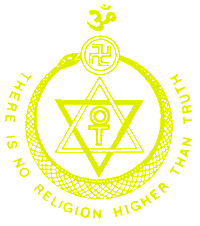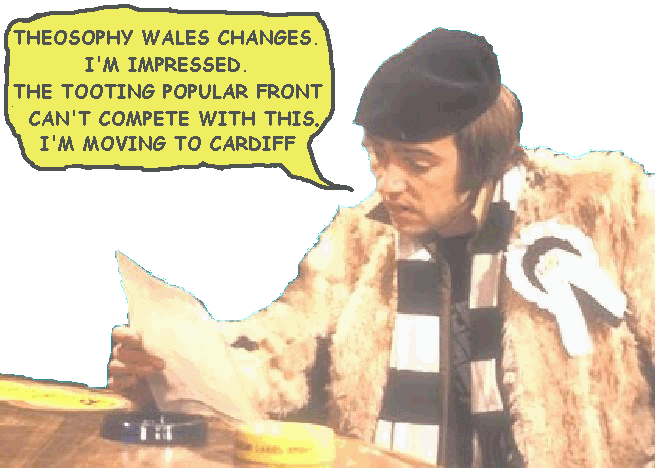HORNET
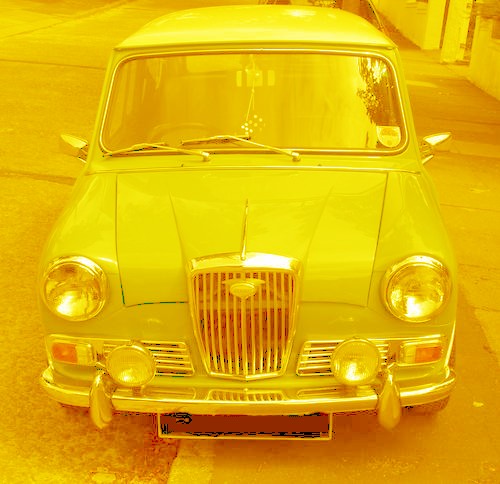
The Wolseley Hornet 1960s model
An upmarket version of the Mini
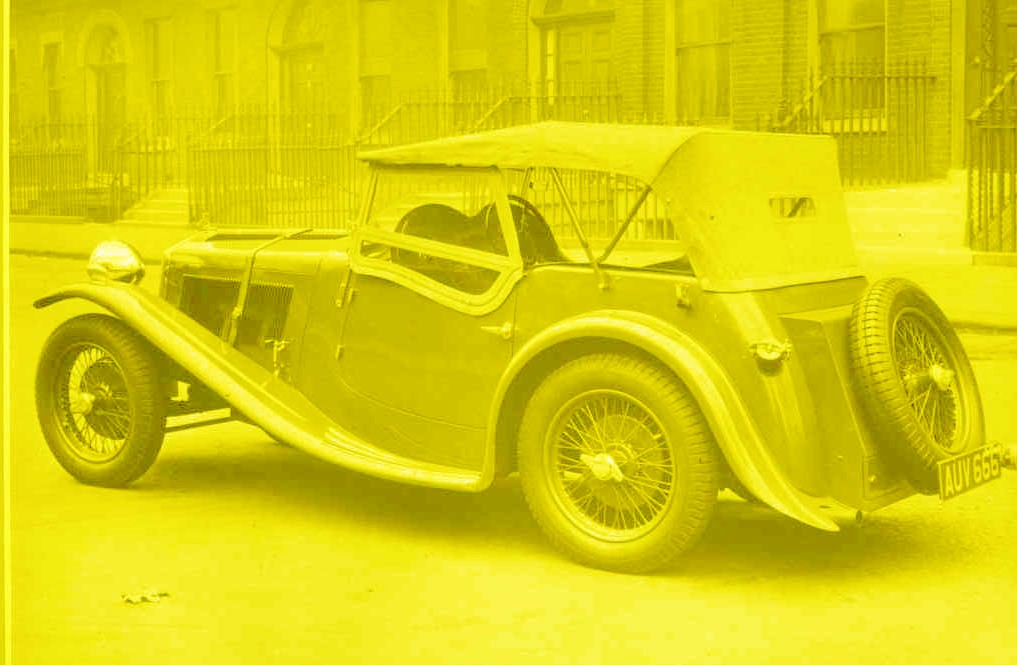
A 1930s Wolseley Hornet sports car
The bodywork for these was made to order by
a coachbuilder
of the customer’s choice and there were
many variations of this car.
The series ran from 1930 to 1935
The
Wolseley Hornet both in its 1930s sports car
incarnation,
and its 1960s posh mini version, has
very
little (in fact nothing) to do with Theosophy
but
we have found that Theosophists and new
enquirers
do like pictures of classic cars
and
we get a lot of positive feedback.
You can find
Theosophy Wales groups in
Bangor, Cardiff,
Conwy & Swansea
Theosophy Wales
has no controlling body
and is made up of
independent groups
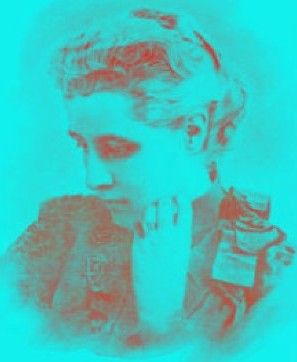
________________________
The Ancient Wisdom
by
Annie Besant
The
Mental Plane
The mental plane, as its name implies, is that which
belongs to consciousness working as thought ; not of the mind as it works
through the brain, but as it works in its own world, unencumbered with physical
spirit-matter. This world is
the world of the real man. The word "man"
comes from the Sanskrit root "man" and this is the root of the
Sanskrit verb "to think," so that man means thinker; he is named by
his most characteristic attribute, intelligence.
In English the word "mind" has to stand for
the intellectual consciousness itself, and also for the effects produced on the
physical brain by the vibration of that consciousness ; but we have now to
conceive of the intellectual consciousness as an entity, an individual – a
being, the vibrations of whose life are thoughts, thoughts which are images,
not words.
This individual is Manas, or the Thinker ; (Derived
from Manas is the technical name, the mânasic plane. Englished as
"mental." We might call it the plane of the mind proper, to
distinguish its activities from those of the mind working in the flesh.) –he is
the Self, clothed in the matter, and working within the conditions, of the
higher subdivisions of the mental plane. He reveals his
presence on the physical plane by the vibrations he
sets up in the brain and nervous system ; these respond to the thrills of his
life by sympathetic vibrations, but in consequence of the coarseness of their
material they can reproduce only a small section of his vibrations and even
that very imperfectly.
Just as science asserts the existence of a vast series
of etheric vibrations, of which the eye can only see a small fragment, the
solar light spectrum, because it can vibrate only within certain limits, so can
the physical thought-apparatus, the brain and nervous system, think only a
small fragment of the vast series of mental vibrations set up by the Thinker in
his own world.
The most receptive brains respond up to the point of
what we call the great intellectual power ; the exceptionally receptive brains
respond up to the point of what we call genius ; the exceptionally unreceptive
brains respond only up to the point we call idiocy ; but every one sends
beating against his brain
millions of thought-waves to which it cannot respond,
owing to the density of its materials, and just in proportion to its
sensitiveness are the so-called mental powers of each. But before studying the
Thinker, it will be well to consider his world, the mental plane itself.
The mental plane is that which is next to the astral,
and is separated from it only by differences of materials, just as the astral
is separated from the physical. In fact, we may repeat what was said as to the
astral and the physical with regard to the mental and the astral. Life on the
mental plane is more
active than on the astral, and form is more plastic.
The spirit-matter of that plane is more highly vitalised and finer than any
grade of matter in the astral world. The ultimate atom of astral matter has
innumerable aggregations of the coarsest mental matter for its encircling
sphere-world, so that the disintegration of the astral atom yields a mass of
mental matter of the coarsest
kinds. Under these circumstances it will be understood
that the play of the life-forces on this plane will be enormously increased in
activity, there being so much less mass to be moved by them.
The matter is in constant ceaseless motion, taking
form under every thrill of life, and adapting itself without hesitation to
every changing motion. "Mind-stuff," as it has been called, makes
astral spirit-matter seem clumsy, heavy, and lustreless, although compared with
the physical spirit-matter it is so fairy-light and luminous. But the law of
analogy holds good, and gives us a clue to guide us through this super astral
region, the region that is our birthplace and our home, although, imprisoned in
a foreign land, we know it not, and gaze at descriptions of it with the eyes of
aliens.
Once again here, as on the two lower planes, the
subdivisions of the spirit-matter of the plane are seven in number. Once again,
these varieties enter into countless combinations, of every variety of
complexity, yielding the solids, liquids, gases, and ethers of the mental
plane. The word "solid" seems indeed absurd, when speaking of even
the most substantial forms of mind-stuff ; yet as they are dense in comparison
with other kinds of mental materials, and as we have no descriptive words save
such as are based on physical conditions, we must even use it for lack of a
better.
Enough if we understand that this plane follows the
general law and order of Nature, which is, for our globe, the septenary basis,
and that the seven subdivisions of matter are of lessening densities,
relatively to each other, as the physical solids, liquids, gases, and ethers ;
the seventh, or highest, subdivision being composed exclusively of the mental
atoms.
These subdivisions are grouped under two headings, to
which the somewhat inefficient and unintelligible epithets "formless"
and "form" have been assigned. (Arûpa, without form: rûpa, form. Rûpa
is form, shape, body. ) The lower four – the first, second, third, and fourth
subdivisions – are grouped together as "with form" ; the higher three
– the fifth, sixth and seventh
subdivisions – are grouped as "formless."
The grouping is necessary, for the distinction is a real one, although one
difficult to describe, and the regions are related in consciousness to the
divisions in the mind itself – as will appear more plainly a little farther on.
The distinction may perhaps be best expressed by
saying that in the lower four subdivisions the vibrations of consciousness give
rise to forms, to images or pictures, and every thought appears as a living
shape ; whereas in the higher three, consciousness, though still, of course,
setting up vibrations, seems rather to send them out as a mighty stream of
living energy, which does not body itself into distinct images while it remains
in this higher region, but which steps up a variety of forms all linked by some
common condition when it rushes into the lower worlds.
The nearest analogy that I can find for the conception
I am trying to express is that of abstract and concrete thoughts ; an abstract
idea of a triangle has no form, but connotes any plane figure contained within
three right lines, the angles of which make two right angles ; such an idea,
with conditions but without shape, thrown into the lower world, may give birth
to a vast variety of figures, right-angled, isosceles, scalene, of any colour
and size, but all filling the conditions – concrete triangles each one with a
definite shape of its own. The impossibility of giving in words a lucid
exposition of the difference in the action of consciousness in the two regions
is due to the fact that words are the symbols of images and belong to the
workings of the lower mind in the brain, and are based wholly upon those
workings ; while the "formless" region belongs to the Pure reason,
which never works within the narrow limits of language.
The mental plane is that which reflects the Universal
Mind in Nature, the plane which in our little system corresponds with that of
the Great Mind in the Kosmos. (Mahat, the Third LOGOS, or Divine Creative
Intelligence, the Brahmâ of the Hindus, the Mandjusri of the Northern
Buddhists, the Holy Spirit of the Christians.) In its higher regions exist all
the archetypal ideas which are now in course of concrete evolution, and in its
lower the working out of these into successive forms, to be duly reproduced in
the astral and physical worlds.
Its materials are capable of combining under the
impulse of thought vibrations, and can give rise to any combination which
thought can construct ; as iron can be made into a spade for digging or into a
sword for slaying, so can mind-stuff be shaped into thought-forms that help or
injure ; the vibrating life of the Thinker shapes the materials around him, and
according to his volitions so is his work. In that region thought and action,
will and deed, are one and the same thing – spirit-matter here becomes the
obedient servant of the life, adapting itself to every creative motion.
These vibrations, which shape the matter of the plane
into thought-forms, give rise also from their swiftness and subtlety to the
most exquisite and constantly changing colours, waves of varying shades like
the rainbow hues of mother-of-pearl, etherialised and brightened to an
indescribable extent, sweeping over and through every form, so that each
presents a harmony of rippling, living, luminous, delicate colours, including
many not ever known to earth.
Words can give no idea of the exquisite beauty and
radiance shown in combinations of this subtle matter, instinct with life and
motion.
Every seer who has witnessed it, Hindu, Buddhist,
Christian, speaks in rapturous terms of its glorious beauty, and ever confesses
his utter inability to describe it; words seem but to coarsen and deprave it,
however deftly woven in its praise.
Thought-forms naturally play a large part among the
living creatures that function on the mental plane. They resemble those with
which we are already familiar in the astral world, save that they are far more
radiant and more brilliantly coloured, are stronger, more lasting, and more
fully vitalised. As the higher intellectual qualities become more clearly marked,
these forms show very sharply defined outlines, and there is a tendency to a
singular perfection of geometrical figures accompanied by an equally singular
purity of luminous colour. But, needless to say at the present stage of
humanity, there is a vast preponderance of cloudy and irregularly shaped
thoughts, the production of the ill-trained minds of the majority.
Rarely beautiful artistic thoughts are also here
encountered, and it is little wonder that painters who have caught, in dreamy
vision, some glimpse of their ideal, often fret against their incapacity to
reproduce its glowing beauty in earth’s dull pigments. These thought-forms are
built out of the elemental essence of the plane, the vibrations of the thought
throwing the elemental essence into a corresponding shape, and this shape
having the thought as its informing life. Thus again we have "artificial
elementals" created in a way identical with that by which they come into
being in the astral regions. All that is said in Chapter II of their generation
and of their importance may be repeated of those of the mental plane, with here
the additional responsibility on their creators of the greater force and
permanence belonging to those of this higher world.
The elemental essence of the mental plane is formed by
the Monad in the stage of its descent immediately preceding its entrance into
the astral world, and it constitutes the second elemental kingdom, existing on
the four lower subdivisions of the mental plane. The three higher subdivisions,
the "formless," are occupied by the first elemental kingdom, the
elemental essence there being thrown by thought into brilliant coruscations,
coloured streams, and flashes of living fire, instead of into definite shapes,
taking as it were its first lessons in combined action, but not yet assuming
definite limitations of forms.
On the mental plane, in both its great divisions,
exist numberless
Intelligences, whose lowest bodies are formed of the
luminous matter and elemental essence of that plane – Shining ones who guide
the processes of natural order, overlooking the hosts of lower entities before
spoken of, and yielding submission in their several hierarchies to their great
overlords of the seven Elements. (These are the Arûpa and Rûpa Devas of the
Hindus and the Buddhists, the "Lords of the heavenly and the earthly"
of the Zoroastrians, the Archangels and Angels of the Christians and
Mahomedans).
They are, as may readily be imagined, beings of vast
knowledge, of great power, and most splendid in appearance, radiant, flashing
creatures, myriad-hued, like rainbows of changing supernal colours, of
stateliest mien, calm energy incarnate, embodiments of resistless strength. The
description of the great Christian Seer leaps to mind, when he wrote of a
mighty angel: "A rainbow was upon his head, and his face was imperial as
it were the sun, and his feet as pillars of fire.( Revelation, x, 1). "As
the sound of many waters" are their voices, as echoes from the music of
the spheres. They guide natural order, and rule the vast companies of the
elementals of the astral world, so that their cohorts carry on ceaselessly the
processes of nature with undeviating regularity and accuracy.
On the lower mental plane are seen many Chelâs at work
in their mental bodies, (Usually called Mâyâvi Rûpa, or illusory body, when
arranged for independent functioning in the mental world.) --- freed for a time
from their physical vestures. When the body is wrapped in deep sleep the true
man, the Thinker, may escape from it, and work untrammelled by its weight in
these higher regions.
From here he can aid and comfort his fellowmen by
acting directly on theirminds, suggesting helpful thoughts, putting before them
noble ideas, more effectively and speedily than he can do when encased in the
body.
He can see their needs more clearly and therefore can
supply them more perfectly, and it is his highest privilege and joy thus to
minister to his struggling brothers, without their knowledge of his service or
any ideas of theirs as to the strong arm that lifts their burden, or the soft
voice that whispers solace in their pain.
Unseen, unrecognised, he works, serving his enemies as
gladly and as freely as his friends, dispensing to individuals the stream of
beneficent forces that are poured down from the great Helpers in higher
spheres. Here also are sometimes seen the glorious figures of the Masters,
though for the most part They reside on the highest level of the
"formless" division of the mental plane ; and other Great Ones may
also sometimes come hither on some mission of compassion requiring such lower
manifestation.
Communication between intelligences functioning
consciously on this plane, whether human or non-human, whether in or out of the
body, is practically instantaneous, for it is with:the "speed of
thought." Barriers of space have here no power to divide, and any soul can
come into touch with any one by merely directing his attention to him.
Not only is communication thus swift, but it is also
complete, if the souls are at about the same stage of evolution ; no words
fetter and obstruct the communion, but the whole thought flashes from the one
to the other, or, perhaps more exactly, each sees the thought as conceived by
the other.
The real barriers between souls are the differences of
evolution ; the less evolved can know only as much of the more highly evolved
as his is able to respond to ; the limitation can obviously be felt only by the
higher one, as the lesser has all that he can contain.
The more evolved a soul, the more does he know of all
around him, the nearer does he approach to realities ; but the mental plane has
also its veils of illusion, it must be remembered, though they be far fewer and
thinner than those of the astral and the physical worlds. Each soul has its own
mental atmosphere, and, as all impressions must come through this atmosphere,
they are all distorted and coloured. The clearer and purer, the atmosphere, and
the less it is coloured by the personality, the fewer are the illusions that can
befall it.
The three highest subdivisions of the mental plane are
the habitat of the Thinker himself, and he dwells on one or other of these,
according to the stage of his evolution. The vast majority live on the lowest
level, in various stages of evolution ; a comparatively few of the highly
intellectual dwell on the second level, the Thinker ascending thither – to use
a phrase more suitable to the physical than to the mental plane – when the
subtler matter of that region preponderates in him, and thus necessitates the
change ; there is of course, no "ascending," no change of place, but
he receives the vibrations of that subtler matter, being able to respond to
them, and he himself is able to send out forces that throw its rare particles
into vibration.
The student should familiarise himself with the fact
that rising in the scale of evolution does not move him from place to place,
but renders him more and more able to receive impressions. Every sphere is
around us, the astral, the mental, the buddhic, the nirvânic, and worlds higher
yet, the life of the supreme God ; we need not stir to find them, for they are
here; but our dull unreceptivity shuts them out more effectively than millions
of miles of mere space.
We are conscious only of that which affects us, which
stirs us to responsive vibration, and as we become more and more receptive, as
we draw into ourself finer and finer matter, we come into contact with subtler
and subtler worlds.
Hence, rising from one level to another means that we
are weaving our vestures of finer materials and can receive through them the
contacts of finer worlds ; and it means further that in the Self within these
vestures diviner powers are waking from latency into activity, and are sending
out their subtler thrills of life.
At the stage now reached by the Thinker, he is fully
conscious of his surroundings and is in possession of the memory of his past.
He knows the bodies he is wearing, through which he is contacting the lower
planes, and he is able to influence and guide them to a great extent. He sees
the difficulties, the obstacles, they are approaching – the results of past
careless living – and he sets himself to pour into them energies by which they
may be better equipped for their task.
His direction is sometimes felt in the lower
consciousness as an imperiously compelling force that will have its way, and
that impels to a course of action for which all the reasons may not be clear to
the dimmer vision caused by the mental and astral garments. Men who have done
great deeds have occasionally left on record their consciousness of an inner
and compelling power, which seemed to leave them no choice save to do as they
had done. They were then acting as the real man ; the Thinkers, that are the
inner men, were doing the work consciously through the bodies that then were
fulfilling their proper functions as vehicles of the individual. To these
higher powers all will come as evolution proceeds.
On the third level of the upper region of the mental
plane dwell the Egos of the Masters, and of the Initiates who are Their Chelâs,
the Thinkers having here a preponderance of the matter of this region in their
bodies. From this world of subtlest mental forces the Masters carry on Their
beneficent work for humanity, raining down noble ideals, inspiring thoughts,
devotional aspirations, streams of spiritual and intellectual help for men.
Every force there generated, rays out in myriad
directions, and the noblest, purest souls catch most readily these helpful
influences. A discovery flashes into the mind of the patient searcher into
Nature’s secrets ; a new melody entrances the ear of the great musician ; the
answer to a long studied problem illumines the intellect of a lofty philosopher
; a new energy of hope and love suffuses the heart of an unwearied
philanthropist. Yet men think that they are left uncared for, although the very
phrases they use ; "the thought occurred to me; the idea came to me; the
discovery flashed on me " unconsciously testify to the truth known to
their inner selves though the outer eyes be blind.
Let us now turn to the study of the Thinker and his
vestures as they are found in men on earth. The body of the consciousness,
conditioning it in the four lower subdivisions of the mental plane – the mental
body, as we term it – is formed of combinations of the matter of these
subdivisions. The Thinker, the individual, Human Soul – formed in the way
described in the latter part of this chapter – when he is coming into
incarnation, first radiates forth some of his energy in vibrations that attract
round him, and clothe him in, matter drawn from the four lower subdivisions of
his own plane.
According to the nature of the vibrations are the
kinds of matter they attract ; the finer kinds answer the swifter vibrations
and take form under their impulse ; the coarser kinds similarly answer the
slower ones ; just as a wire will sympathetically sound out a note – i.e., a
given number of vibrations – coming from a wire similar in weight and tension
to itself, but will remain dumb amid a chorus of notes from wires dissimilar to
itself in these respects, so do the different kinds of matter assort themselves
in answer to different kinds of vibrations. Exactly according to the vibrations
sent out by the Thinker will be the nature of the mental body that he thus
draws around him, and this mental body is what is called the lower mind, the
lower Manas, because it is the Thinker clothed in the matter of the lower
subdivisions of the mental plane and conditioned by it in his further working.
None of his energies which are too subtle to move this
matter, too swift for its response, can express themselves through it ; he is
therefore limited by it, conditioned by it, restricted by it in his expression
of himself. It is the first of his prison-houses during his incarnate life, and
while his energies are acting within it he is largely shut off from his own
higher world, for his attention is with the outgoing energies and his life is
thrown with them into the mental body, often spoken as a vesture, or sheath, or
vehicle – any expression will serve which connotes the idea that the Thinker is
not the mental body, but formed it and uses it in order to express as much of
himself as he can in the lower mental region.
It must not be forgotten that his energies, still
pulsing outwards, draw round him also the coarser matter of the astral plane as
his astral body ; and during his incarnate life the energies that express
themselves through the lower kinds of mental matter are so readily changed by
it into the slower vibrations that are responded to by astral matter that the
two bodies are continually vibrating together, and become very closely
interwoven ; the coarser the kinds of matter built into the mental body, the
more intimate becomes this union, so that the two bodies are sometimes classed
together and even taken as one.( Thus the Theosophist will speak of Kâma Manas,
meaning the mind as working in and with the desire nature, affecting and
affected by the animal nature. The Vedântin classes the two together, and
speaks of the Self as working in the
Manomayakosha, the sheath composed of the lower mind,
emotions, and passions.
The European psychologist makes "feelings"
one section of his tripartite division of "mind", and includes under
feelings both emotions and sensations.) When we come to study Reincarnation we
shall find this fact assuming vital importance.
According to the stage of evolution reached by the man
will be the type of mental body he forms on his way to become again incarnate,
and we may study, as we did with the astral body, the respective mental bodies
of three types of men
a) an undeveloped man
b) an average man
c) a spiritually advanced man.
In the undeveloped man the mental body is but little
perceptible, a small amount of unorganised mental matter, chiefly from the
lowest subdivisions of the plane, being all that represents it. This is played
on almost entirely from the lower bodies, being set vibrating feebly by the
astral storms raised by the contacts with material objects through the sense
organs. Except when stimulated by these astral vibrations it remains almost
quiescent, and even under their impulses its responses are sluggish. No
definite activity is generated from within, these blows from the outer world
being necessary to arouse any distinct response.
The more violent the blows, the better for the
progress of the man, for each responsive vibration aids in the embryonic
development of the mental body. Riotous pleasure, anger, rage, pain, terror,
all these passions, causing whirlwinds in the astral body, awaken faint
vibrations in the mental, and gradually these vibrations, stirring into
commencing activity the mental consciousness, cause it to add something of its
own to the impressions made on it from without.
We have seen that the mental body is so closely
mingled with the astral that they act as a single body, but the dawning mental
faculties add to the astral passions a certain strength and quality not
apparent in them when they work as purely animal qualities. The impressions
made on the mental body are more permanent than those made on the astral, and
they are consciously reproduced by it. Here memory and the organ of imagination
begin, and the latter gradually moulds itself, the images from the outer world
working on the matter of the mental body and forming its materials into their
own likeness.
These images, born of the contacts of the senses, draw
round themselves the coarsest mental matter; the dawning powers of
consciousness reproduce these images, and thus accumulate a store of pictures
that begin to stimulate action initiated from within, from the wish to
experience again through the outer organs the vibrations that were found
pleasant, and to avoid those productive of pain.
The mental body then begins to stimulate the astral,
and to arouse in it the desires that, in the animal, slumber until awakened by
a physical stimulus ; hence we see in the undeveloped man a persistent pursuit
of sense-gratification never found in the lower animals, a lust, a cruelty, a
calculation, to which they are strangers. The dawning powers of the mind, yoked
to the service of the senses, make of man a far more dangerous and savage brute
than any animal, and the stronger and more subtle forces inherent in the
mental-spiritual matter lend to the passion-nature an energy and a keenness
that we do not find in the animal world.
But these very excesses lead to their own correction
by the sufferings which they cause, and these resultant experiences play upon
the consciousness and set up new images on which the imagination works. These
stimulate the consciousness to resist many of the vibrations that reach it by
way of the astral body from the external world, and to exercise its volition in
holding the passions back instead of giving them free rein.
Such resistant vibrations are set up in, and attract
towards, the mental body, finer combinations of mind-stuff and tend also to
expel from it the coarser combinations that vibrate responsively to the
passional notes set up in the astral body ; by this struggle between the
vibrations set up by passion-images and the vibrations set up by the
imaginative reproduction of past experiences, the mental body grows, begins to
develop a definite organisation, and to exercise more and more initiative as
regards external activities.
While the earth life is spent gathering experiences,
the intermediate life is spent assimilating them, as we shall see in detail in
the following chapter, so that in each return to earth the Thinker has an
increased stock of faculties to take shape as his mental body. Thus the
undeveloped man, whose mind is the slave of his passions, grows into the
average man, whose mind is a battleground in which passions and mental powers
wage war with varying success, about balanced in their forces, but who is
gradually gaining the mastery over his lower nature.
In the average man, the mental body is much increased
in size, shows a certain amount of organisation, and contains a fair proportion
of matter drawn from the second, third, and fourth subdivisions of the mental
plane. The general law which regulates all the building up and modifying of the
mental body may here be fitly studied, though it is the same principle already
seen working in the lower realms of the astral and physical worlds.
Exercise increases, disuse atrophies and finally
destroys. Every vibration set up in the mental body causes changes in its
constituents, throwing out of it, in the part affected, the matter that cannot
vibrate sympathetically, and replacing it by suitable materials drawn from the
practically illimitable store around. The more a series of vibrations is
repeated, the more does the part affected by them increase in development ;
hence, it may be noted in passing, the injury done to the mental body by
over-specialisation of mental energies.
Such mistaken direction of these powers causes a
lopsided development of the mental body ; it becomes proportionately over
developed in the region in which these forces are continually playing and
proportionately undeveloped in other parts, perhaps equally important. A
harmonious and proportionate all-round development is the object to be sought,
and for this we need a calm self-analysis and a definite direction of means to
ends. A knowledge of this law, further explains certain familiar experiences,
and affords a sure hope of progress. When a new study is commenced, or a change
in favour of high morality is initiated, the early stages are found to be
fraught with difficulties ; sometimes the effort is even abandoned because the
obstacles in the way of its success appear to be insurmountable.
At the beginning of any new mental undertaking, the
whole automatism of the mental body opposes it ; the materials habituated to
vibrate in a particular way, cannot accommodate themselves to the new impulses,
and the early stage consists chiefly of sending out thrills of force which are
frustrated, so far as setting up vibrations in the mental body are concerned,
but which are the necessary preliminary to any such sympathetic vibrations, as
they shake out of the body the old refractory materials and draw into it the
sympathetic kinds.
During this process, the man is not conscious of any
progress; he is conscious only of the frustration of his efforts and of the
dull resistance he encounters. Presently, if he persists, as the newly
attracted materials begin to function, he succeeds better in his attempts, and
at last, when all the old materials are expelled and the new are working, he
finds himself succeeding without an effort, and his object is accomplished.
The critical time is during the first stage ; but if
he trust in the law, as sure in its working as every other law in Nature, and
persistently repeat his efforts, he must succeed ; and a knowledge of this fact
may cheer him when otherwise he would be sinking in despair. In this way, then,
the average man may work on, finding with joy that as he steadily resists the
promptings of the lower nature he is conscious they are losing their power over
him, for he is expelling from his mental body all the materials that are
capable of being thrown into sympathetic vibrations. Thus the mental body
gradually comes to be composed of the finer constituents of the four lower
subdivisions of the mental plane, until it has become radiant and exquisitely
beautiful form which is the mental body of the –
Spiritually developed man. From this body all the
coarser combinations have been eliminated, so that the objects of the senses no
longer find in it, or in the astral body connected with it, materials that
respond sympathetically to their vibrations. It contains only the finer
combinations belonging to each of the four subdivisions of the lower mental
world, and of these again the materials of the third and fourth sub-planes very
much predominate in its composition over the materials of the second and first,
making it responsive to all the higher workings of the intellect, to the
delicate contacts of the higher arts, to all the pure thrills of loftier
emotions.
Such a body enables the Thinker who is clothed in it
to express himself much more fully in the lower mental region and in the astral
and physical worlds ; its materials are capable of a far wider range of
responsive vibrations, and the impulses from a loftier realm mould it into
nobler and subtler organisation.
Such a body is rapidly becoming ready to reproduce every
impulse from the Thinker which is capable of expression on the lower
subdivisions of the mental plane ; it is growing into a perfect instrument for
activities in this lower mental world.
A clear understanding of the nature of the mental body
would much modify modern education, and would make it far more serviceable to
the Thinker than it is at present. The general characteristics of this body
depend on the past lives of the Thinker on earth, as will be thoroughly
understood when we have studied Reincarnation and Karma. The body is
constituted on the mental plane, and its materials depend on the qualities that
the Thinker has garnered within himself as the results of his past experiences.
All that education can do is to provide such external
stimuli as shall arouse and encourage the growth of the useful faculties he
already possesses, and stunt and help in the eradication of those that are
undesirable. The drawing out of these inborn faculties, and not the cramming of
the mind with facts, is the object of true education.
Nor need memory be cultivated as a separate faculty,
for memory depends on attention – that is on the steady concentration of the
mind on the subject studied – and on the natural affinity between the subject
and the mind. If the subject be liked – that is, if the mind has a capacity for
it – memory will not fail, provided due attention be paid. Therefore education
should cultivate the habit of steady concentration, of sustained attention, and
should be directed according to the inborn faculties of the pupil.
Let us now pass into the "formless"
divisions of the mental plane, the region which is man’s true home during the
cycle of his reincarnations, into which he is born, a baby soul, an infant Ego,
an embryonic individuality, when he begins his purely human evolution.( See
Chapters VII and VIII, on "Reincarnation").
The outline of this Ego, the Thinker, is oval in
shape, and hence H.P. Blavatsky speaks of this body of Manas which endures
throughout all his incarnations as the Auric Egg. Formed of the matter of the
three highest subdivisions of the mental plane, it is exquisitely fine, a film
of rarest subtlety, even at its first inception ; and, as it develops, it
becomes a radiant object of supernal glory and beauty, the shining One, as it
has been aptly named. ( This is the Augœides of the Neo-Platonists, the
"spiritual body" of St. Paul).
What is this Thinker? He is the divine Self, as
already said, limited, or individualised, by this subtle body drawn from the
materials of the "formless" region of the mental plane. (The Self,
working in the Vignyânamayakosha, the sheath of discriminative knowledge,
according to the Vedântic classification).
This matter – drawn around a ray of the Self, a living
beam of the one Light and Life of the universe – shuts off this ray from its
Source, so far as the external world is concerned, encloses it within a filmy
shell of itself, and so makes it "an individual." The life is the Life
of the LOGOS, but all the powers of that Life are lying latent, concealed ;
everything is there potentially, germinally, as the tree is hidden within the
tiny germ in the seed.
This seed is dropped into the soil of human life that
its latent forces may be quickened into activity by the sun of joy and the rain
of tears, and he fed by the juices of the life-soil that we call experience,
until the germ grows into a mighty tree, the image of its generating Sire.
Human evolution is the evolution of the Thinker; he takes on bodies on the
lower mental and astral, and the physical planes, wears then through earthly,
astral, lower mental life, dropping them successively at the regular stages of
this life-cycle as he passes from world to world, but ever storing up within
himself the fruits he has gathered by their use on each plane.
At first, as little conscious as a baby’s earthly
body, he almost slept through life after life, till the experiences playing on
him from without awakened some of his latent forces into activity; but
gradually he assumed more and more part in the direction of his life, until,
with manhood reached, he took his life into his own hands, and an
ever-increasing control over his future destiny.
The growth of the permanent body which, with the
divine consciousness, forms the Thinker is extremely slow. Its technical name
is the causal body, because he gathers up within it the results of all
experiences, and these act as causes, moulding future lives. It is the only
permanent one among the bodies during incarnation, the mental, the astral, and
physical bodies being reconstituted for each fresh life ; as each perishes in
turn, it hands on its harvest to the one above it, and thus all the harvests
are finally stored in the permanent body ; when the Thinker returns to
incarnation he sends out his energies, constituted of these harvests, on each
successive plane, and thus draws round him a anew body after body suitable to
his past.
The growth of the causal body itself, as said, is very
slow, for it can vibrate only in answer to impulses that can be expressed in
the very subtle matter of which it is composed, thus weaving them into the
texture of its being. Hence the passions, which play so large a part in the
early stages of human evolution, cannot directly affect its growth. The Thinker
can work into himself only the experiences that can be reproduced in the
vibrations of the causal body, and these must belong to the mental region, and
be highly intellectual or loftily moral in their character ; other wise its
subtle matter can give no sympathetic vibration in answer.
A very little reflection will convince any one how
little material, suitable for the growth of this lofty body, he affords by his
daily life ; hence the slowness of evolution, the little progress made. The
Thinker should have more of himself to put out in each successive life, and,
when this is the case, evolution goes swiftly forward. Persistence in evil
courses reacts in a kind of indirect way on the causal body, and does more harm
than the mere retardation of growth ; it seems after a long time to cause a
certain incapacity to respond to the vibrations set up by the opposite good,
and thus to delay growth for a considerable period after the evil has been
renounced.
Directly to injure the causal body, evil of a highly
intellectual and refined kind is necessary, the "spiritual evil"
mentioned in the various Scriptures of the world. This is fortunately rare,
rare as spiritual good, and found only among the highly progressed, whether
they be following the Right-hand or the Left-hand Path. (The Right-hand Path is
that which leads to divine manhood, to Adeptship used in the service of the
worlds. The Left-hand Path is that which also leads to Adeptship, but to
Adeptship that is used to frustrate the progress of evolution and is turned to
selfish individual ends. They are sometimes called the White and Black Paths
respectively.)
The habitat of the Thinker, of the Eternal Man, is on
the fifth subplane, the lowest level of the "formless" region of the
mental plane. The great masses of mankind are here, scarce yet awake, still in
the infancy of their life. The Thinker develops consciousness slowly, as his
energies, playing on the lower planes, there gather experience, which is indrawn
with these energies as they return to him treasure-laden with the harvest of
life. This eternal Man, the individualised Self, is the actor in every body
that he wears ; it is his presence that gives the feeling of " I "
alike to body and mind, the " I " being that which is self-conscious
and which, by illusion, identifies itself with that vehicle in which it is most
actively energising.
To the man of the senses the " I " is the
physical body and the desire nature ; he draws from these his enjoyment, and he
thinks of these as himself, for his life is in them. To the scholar the "
I " is the mind, for in its exercise lies his joy and therein his life is
concentrated. Few can rise to the abstract heights of spiritual philosophy, and
feel this Eternal Man as " I ", with memory ranging back over past
lives and hopes ranging forward over future births.
The physiologists tell us that if we cut the finger we
do not really feel the pain there where the blood is flowing, but that pain is
felt in the brain, and is by imagination thrown outwards to the place of the
injury ; the feeling of pain in the finger is, they say an illusion ; it is put
by imagination at the point of contact with the object causing the injury ; so
also will a man feel pain in an amputated limb, or rather in the space the limb
used to occupy.
Similarly does the one " I ", the Inner Man,
feel suffering and joy in the sheaths which enwrap him, at the points of
contact with the external world, and feels the sheath to be himself, knowing
not that this feeling is an illusion, and that he is the sole actor and
experiencer in each sheath.
Let us now consider, in this light, the relations
between the higher and lower mind and their action on the brain. The mind,
Manas, the Thinker, is one, and is the Self in the causal body; it is the
source of innumerable energies, of vibrations of innumerable kinds. These it
sends out, raying outwards from itself. The subtlest and finest of these are
expressed in the matter of the causal body, which alone is fine enough to
respond to them ; they form what we call the Pure Reason, whose thoughts are
abstract, whose method of gaining knowledge is intuition ; its very
"nature is knowledge," and it recognises truth at sight as congruous
with itself.
Less subtle vibrations pass outwards, attracting the
matter of the lower mental region, and these are the Lower Manas, or lower mind
– the coarser energies of the higher expressed in denser matter ; these we call
the intellect, comprising reason, judgement, imagination, comparison, and the
other mental faculties ; its thoughts are concrete, and its method is logic ;
it argues, it reasons, it infers. These vibrations, acting through astral
matter on the etheric brain, and by that on the dense physical brain, set up
vibrations therein, which are the heavy and slow reproductions of themselves –
heavy and slow, because the energies lose much of their swiftness in moving the
heavier matter.
This feebleness of response when a vibration is
initiated in a rare medium and then passes into a dense one is familiar to
every student of physics. Strike a bell in air and it sounds clearly ; strike
it in hydrogen, and let the hydrogen vibrations have to set up the atmospheric
waves, and how faint the result. Equally feeble are the workings of the brain
in response to the swift and subtle impacts of the mind ; yet that is all that
the vast majority know as their "consciousness."
The immense importance of the mental workings of this
"consciousness" is due to the fact that it is the only medium whereby
the Thinker can gather the harvest of experience by which he grows. While it is
dominated by the passions it runs riot, and he is left unnourished and
therefore unable to develop ; while it is occupied wholly in mental activities
concerned with the outer world, it can arouse only his lower energies; only as
he is able to impress on it the true object of its life, does it commence to
fulfil its most valuable functions of gathering what will arouse and nourish
his higher energies.
As the Thinker develops he becomes more and more
conscious of his own inherent powers, and also of the workings of his energies
on the lower planes, of the bodies which those energies have drawn around him.
He at last begins to try to influence them, using his memory of the past to
guide his will, and these
impressions we call "conscience" when they
deal with morals and "flashes of intuition " when they enlighten the
intellect.
When these impressions are continuous enough to be
normal, we speak of their aggregate as "genius." The higher evolution
of the Thinker is marked by his increasing control over his lower vehicles, by
their increasing susceptibility to his influence, and their increasing
contributions to growth.
Those who would deliberately aid in this evolution may
do so by a careful training of the lower mind and of the moral character, by
steady and well directed effort.
The habit of quiet, sustained, and sequential thought,
directed to non-worldly subjects, of meditation, of study, develops the
mind-body and renders it a better instrument ; the effort to cultivate abstract
thinking is also useful, as this raises the lower mind towards the higher, and
draws into it the subtlest materials of the lower mental plane.
In these and cognate ways all may actively co-operate
in their own higher evolution, each step forward making the succeeding steps
more rapid. No effort, not even the smallest, is lost, but is followed by its
full effect, and every contribution gathered and handed inwards is stored in
the treasure-house of the causal body for future use. Thus evolution, however
slow and halting, is yet ever onwards, and the divine Life, ever unfolding in
every soul, slowly subdues all things to itself.
_____________________________________
Annie Besant Visits Cardiff 1924
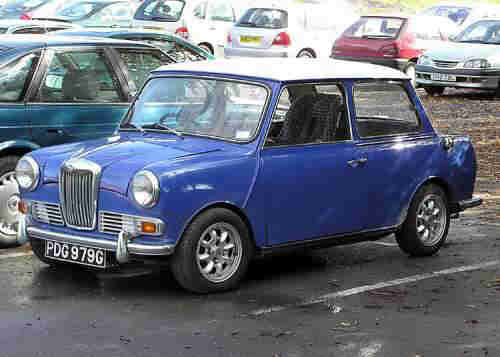
A “G” reg
Aug 1968 – July 1969 Wolseley
Hornet MK III
The 1960s Wolseley Hornet was produced by
the British Motor Corporation
(BMC) from 1961 to 1969 and was upgraded
thro’ MKI, II & III models
although the outward design remained the
same.
The Wolseley Hornet was similar to the more
expensive Riley Elf which ran
for the same period with only the Riley
grill and badge to distinguish
it to the casual observer.
_____________________________
More Theosophy Stuff
with these links
Cardiff Theosophical Society meetings are informal
and there’s always a cup of tea afterwards
The Cardiff Theosophical Society Website
The National Wales Theosophy Website
Bangor, Cardiff, Conwy & Swansea
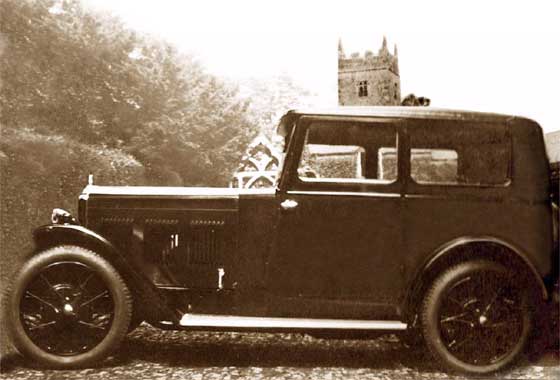
A 1931 Wolseley Hornet saloon style
convertible
The Wolseley Hornet was a
lightweight saloon car produced by the Wolseley Motor Company from 1930 to
1935.
It had a six cylinder (1271cc) engine with a single overhead cam, and
hydraulic brakes. The engine was modified in 1932 to make it shorter and it was
moved forwards on the chassis. In 1935 the engine size was increased to
1378 cc.
Wolseley supplied the firsts cars as either an enclosed saloon with steel
or fabric body or open two seater. From 1931 it was available without the
saloon body, and was used as the basis for a number of sporting specials for
which the customer could choose a styling from a range of coachbuilders. In
1932 Wolsley added two and four seat coupés to the range. For its final year of
production the range was rationalised to a standard saloon and coupé.
A three speed gearbox was fitted to the earliest cars but this was upgraded
to a four speed in 1932 and fitted with synchromesh from 1933. A freewheel
mechanism could be ordered in 1934.The engine was also used in a range of MG
cars.
If
you run a Theosophy Group, please feel free
to
use any of the material on this site
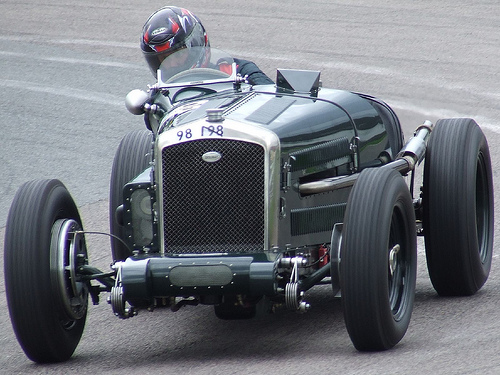
1930s Wolseley Hornet racing car circuiting
the track in modern times
The Most Basic Theosophy
Website in the Universe
A quick overview of Theosophy
and the Theosophical Society
If you run a Theosophy Group you
can use this as an introductory handout.
Theosophy Cardiff’s Instant Guide
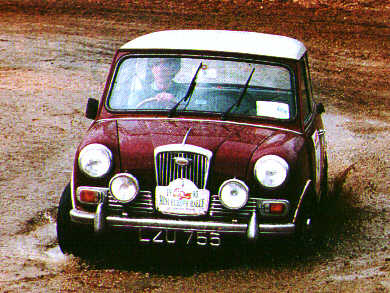
Wolseley Hornet on a rally circa 1963
Theosophical Movement in Wales
as it separates into independent
groups that run do their own show
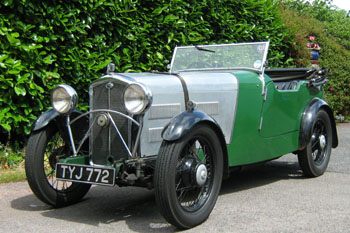
Early 1930s Wolseley Hornet customized
roadster design
Basic front mudguards not extending to
runner boards.
Only the driver gets a windscreen wiper
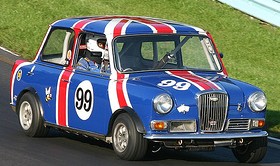
Patriotic Wolseley Hornet on the race track
in 1965
One liners and quick explanations
H P Blavatsky is usually the only
Theosophist that most people have ever
heard of. Let’s put that right
The Voice of the Silence Website
An Independent Theosophical Republic
Links to Free Online Theosophy
Study Resources; Courses, Writings,
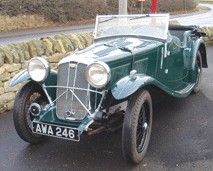
Early 1930s Customized Wolseley Hornet with integrated front mudguards
and runner boards. Two windscreen wipers on
this one.
The main criteria for the inclusion of
links on this site is that they have some
relationship (however tenuous) to Theosophy
and are lightweight, amusing or entertaining.
Topics include Quantum Theory and Socks,
Dick Dastardly and Legendary Blues Singers.

Four views of the car in the picture above
A selection of articles on Reincarnation
Provided in response to the large
number of enquiries we receive at
Cardiff Theosophical Society on this subject
The Voice of the Silence Website
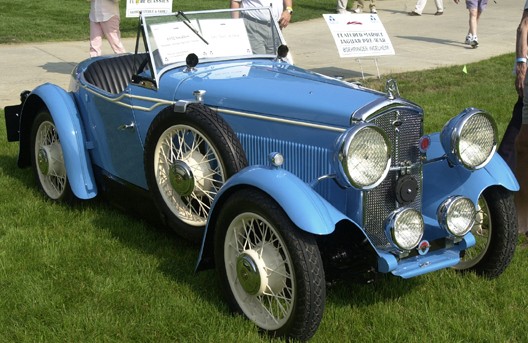
Swallow Wolseley Hornet 1932

A leaflet promoting the new hydrolastic
suspension introduced in the mid sixties.
This became standard on many BMC models
including the Mini, 1100, 1300
& 1800 models. Suspension was
maintained by means of a sealed fluid system
which was claimed to be very comfortable
but appeared to make some people
seasick in the larger cars. As the cars got
older, the suspension might burst
causing the car’s suspension to collapse on
one side meaning a difficult
drive home or to a garage.
This is for everyone, you don’t have to live
in Wales to make good use of this Website

1930s Corsica Wolseley Hornet
No
Aardvarks were harmed in the
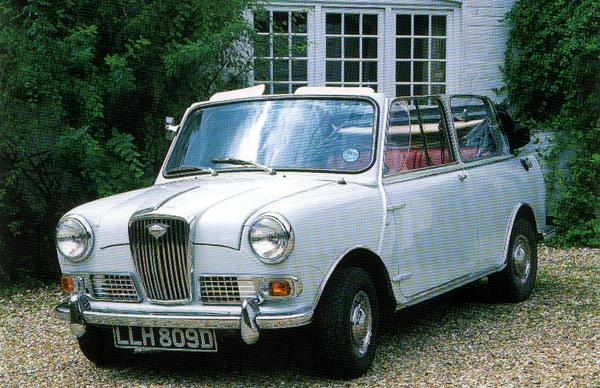
A 1966 Wolseley Hornet convertible by Crayford Engineering
Convertible 1960s Hornets were not standard and were very rare as
were all convertibles in the Mini range.
Crayford did a run of 57 Hornet convertibles for Heinz to be given
as prizes in a competition
Within the British Isles, The
Adyar Theosophical Society has Groups in;
Bangor*Basingstoke*Billericay*Birmingham*Blackburn*Bolton*Bournemouth
Bradford*Bristol*Camberley*Cardiff*Chester*Conwy*Coventry*Dundee*Edinburgh
Folkstone*Glasgow*Grimsby*Inverness*Isle of
Man*Lancaster*Leeds*Leicester
Letchworth*London*Manchester*Merseyside*Middlesborough*Newcastle
upon Tyne
North Devon*Northampton*Northern
Ireland*Norwich*Nottingham
Perth*Republic of Ireland*Sidmouth*Southport*Sussex*Swansea*Torbay
Tunbridge
Wells*Wallasey*Warrington*Wembley*Winchester*Worthing
The Spiritual Home of Urban Theosophy
The Earth Base for Evolutionary Theosophy
A B C D EFG H IJ KL M N OP QR S T UV WXYZ
Complete Theosophical Glossary in Plain Text Format
1.22MB
Quick Explanations with Links to More Detailed Info
What is Theosophy ? Theosophy Defined (More Detail)
Three Fundamental Propositions Key Concepts of Theosophy
Cosmogenesis
Anthropogenesis
Root Races
Karma
Ascended Masters After Death States Reincarnation
The Seven Principles of Man Helena Petrovna Blavatsky
Colonel Henry Steel Olcott William Quan Judge
The Start of the Theosophical Society
History of the Theosophical Society
Theosophical Society Presidents
History of the Theosophical Society in Wales
The Three Objectives of the Theosophical Society
Explanation of the Theosophical Society Emblem
Glossaries of Theosophical Terms
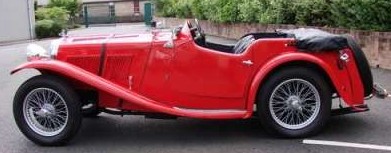
Another good example of a 1930s Wolseley
Hornet
An Outstanding Introduction to Theosophy
By a student of Katherine Tingley
Elementary Theosophy Who is the Man? Body and Soul
Body, Soul and Spirit Reincarnation Karma
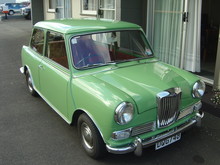
1960s Riley Elf
Outwardly the same as the Wolseley Hornet
except for the badge & grill
A bit more expensive
What Theosophy Is From the Absolute to Man
The Formation of a Solar System The Evolution of Life
The Constitution of Man After Death Reincarnation
The Purpose of Life The Planetary Chains
The Result of Theosophical Study
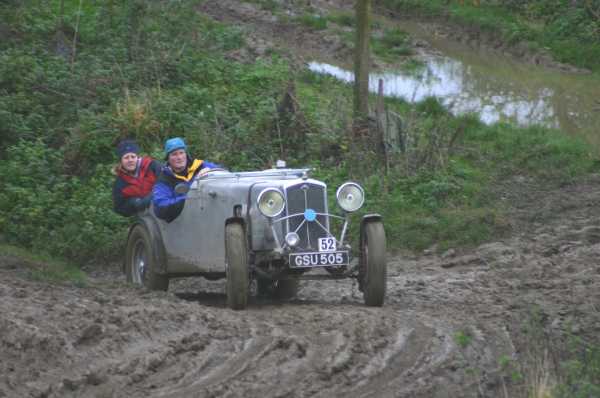
1930’s Wolseley Hornet on a hill climb
trial
An Outline of Theosophy
Charles Webster Leadbeater
Theosophy - What it is How is it Known? The Method of Observation
General Principles The Three Great Truths The Deity
Advantage Gained from this
Knowledge The Divine Scheme
The Constitution of Man The True Man Reincarnation
The Wider Outlook Death Man’s Past and Future
Cause and Effect What Theosophy does for us
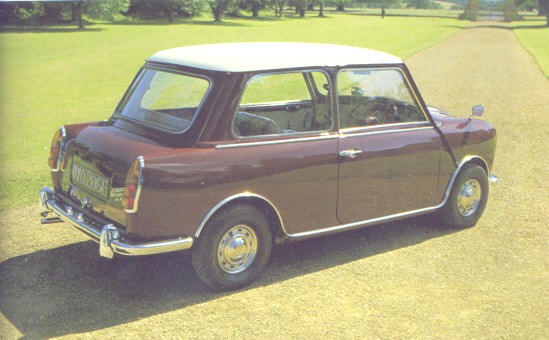
Side and rear view of a 1960s Wolseley
Hornet
Try these if you are looking for a local
Theosophy Group or Centre
UK Listing of Theosophical Groups
Please tell us about your UK Theosophy Group
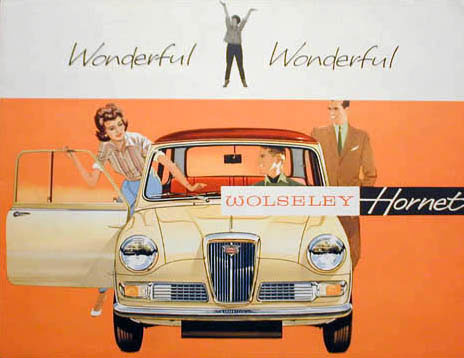
1960s Wolseley Hornet promotional leaflet
___________________
into
categories and presented according to relevance of website.
Web
Directory - Add Link - Submit Article - Online Store - Forum
______________________
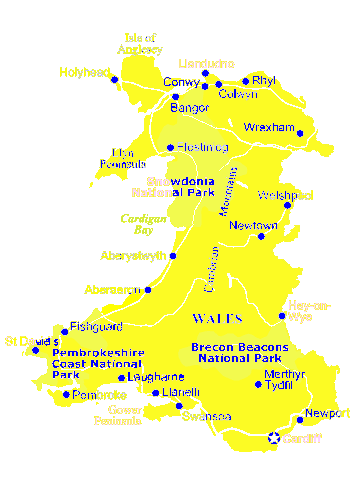
General pages about Wales, Welsh History
and The History of Theosophy in Wales
Wales is a
Principality within the United Kingdom and has an eastern
border with
England. The land area is just over 8,000 square miles.
Snowdon in North
Wales is the highest mountain at 3,650 feet.
The coastline is
almost 750 miles long. The population of Wales
as at the 2001 census is 2,946,200.
________________
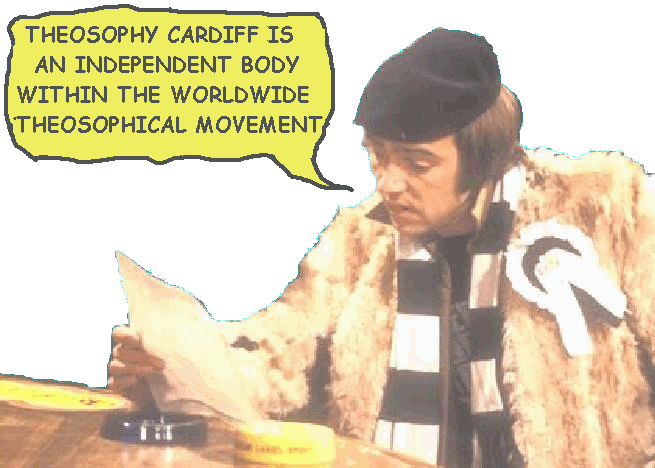
Bangor Conwy
& Swansea Lodges are members
of the Welsh
Regional Association (Formed 1993).
Theosophy Cardiff
separated from the Welsh Regional
Association in March
2008 and became an independent
body within the Theosophical Movement in March 2010
High Drama & Worldwide Confusion
as Theosophy Cardiff Separates from the
Welsh Regional Association (formed 1993)
Theosophy Cardiff cancels its Affiliation
to the Adyar Based Theosophical Society
Cardiff, Wales, UK, CF24 – 1DL
/another-family-job-at-adyar.htm
/cvk-maithreya-manifesto.htm
/singapore-initiative.htm
/control-adyar-or-control-nothing.htm
/good-reason-for-silence.htm
/triumph-of-the-weak.htm
/preethi-muthiah-adyar-profile.htm
/abolitionofpresident.htm
/lack-of-representation.htm
/carry-on-creeping.htm
/preethi-muthiah-letters.htm
/attitude-of-the-theosophical-elite.htm
/international-rules.htm
/members-disqualified.htm
/does-silence-mean-game-over.htm
/gc-concerns-raised.htm
/make-way-for-the-messiahs.htm
/hidden-bad-news.htm
/something-wrong.htm
/gc-2012-minutes.htm
/adyar-internal-problems.htm
/beggars-at-the-door.htm
/cannot-change-will-not-change.htm
/new-committee-nov-7.htm
/victimisation-of-gc-member.htm
/hey-look-a-job-for-his-daughter.htm
/cvk-maithreya-manifesto.htm
/accountable-leadership-urgently-required.htm
President of
Nothing Ballast Open Election?
Adyar Adyar’s Slightly
International Convention
Will there be an
Adyar Free Future? An Extra Box on
the Ballot Paper A Society
Without Members
Is the 2014
Adyar Presidential Election Invalid?
Radha Burnier
Employment Services
Don’t Just Do
Nothing Stand There Adyar, the Sole
Purpose of Adyar Western
President
Save Radha’s
House Ignore the
Voters What an Insult
to Members International
Election Protocol
The Secrecy
Banging the Drum
for Theosophy Burnier Town
Hall The Great
Election Rip-Off
Keeping the
International Headquarters at Adyar ABOLISHThe
International President Bold Initiative
What is Behind
the Attitude of the Theosophical
Elite? Towards a New
Model for Theosophy
Choose a Stooge
SHUT UP &
VOTE Members No
Longer Members A Manifesto
Anybody There?
Now Here’s
Something Worth Keeping Quiet
About Is There Hidden Bad News?
Something Wrong?
Control Adyar or You Control
Nothing Elected
Representation Not Representing
Publicly
Denounced
Make Way for the
Messiahs Does Silence
Mean Game Over
Accountable
Leadership Urgently Required
Can’t Change Won’t Change Beggars at the
Door From The Top
Down Who Owns Adyar?
New Committee?
The Royal Court
of Radha Burnier General Council
Meeting 2013 Minutes Adyar Theosophical
Society International
Rules
Disgraceful
Treatment of an Adyar Employee The Preethi
Muthiah Letters Concerns Raised General Council 2012 Meeting
Minutes
Adyar Internal
Problems Is Adyar Still The
Headquarters? Creep On! General Council
Good Campaign
Pitch, Mr Singhal
Adyar Prepares
for the Break-Up Profile of Adyar
Adyar Family
Appointment Another Family
Power Appointment
Triumph of the
Weak Adyar Job News
No Stand For
Democracy Bent election?
A Society
Without Leadership
Who will Believe
It? Supporting
Adyar? Long Tradition
of Bullying at Adyar
Summary
Dismissal Trouble at
t’Mill
True Purpose of
the 2014 Election
What Makes this
Election Invalid? Trouble Was Your Vote
Counted?
Not Being at
Adyar Democracy in the
Adyar Theosophical Society R.I.P. 11,432 Votes
No Right To
Complain
President’s Inauguration
Pray Silence
It’s Silence as
Usual Who Can Support The Leadership
Now? Shut Up &
Pay Up
President? Really? Adyar & the
US each have Half a President The White Lotus
Hi-Jack Don’t Anybody Ask Me Anything
Is this the Great Wheaton
Rip-Off? Master of the
Small Event The Adyar
Payments Scam CVK Maithreya
Deserved Better Treatment
Staff Treatment
At Adyar Is Wheaton Set
To Support Adyar? CVK Maithreya is
Presidential
Why was
Campaigning Banned
Adyar
Allegations Climate of Fear
Police Action
Threatened QUICK
The Prisoner of
Adyartraz Preethi’s
Allegations 2014 Election
One Man, One
Vote Poor Adyar
Future CVK Maithreya For
Vice-President The General
Council Should Allow Visiting Adyar
D V
Subramaniam’s Posthumous Letter of
Complaint The Amnesty
International Paradox Did you get an
Invite?
Serious Concerns
Raised 2014 Election
Result? The Sundaram Nomination Sham Call for
Emergency Meeting
The Inauguration That Never Was Serious Concerns
Election
Committee Ignores
Misconduct Bent Election
Result
Suspend Call for Action Raise the White
Flag Staff Bullying Why Did The 2014
Election Go Ahead?
Tim Boyd
A Leadership at
War Ignore the
Bullying General Council Ignores
Calls MONEY TO ADYAR? The Great Giveaway
